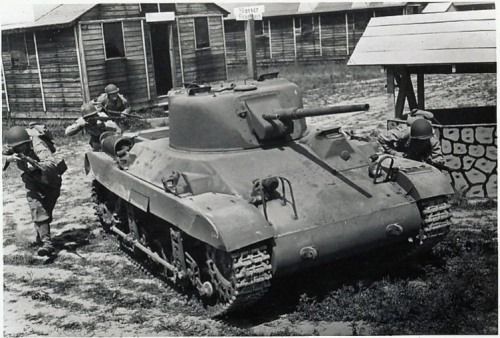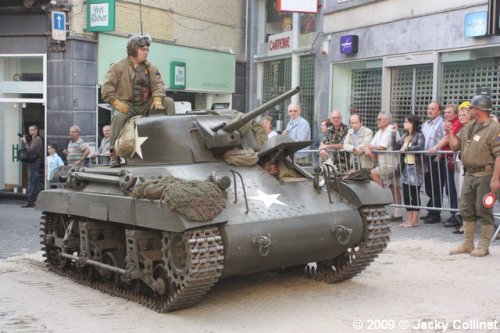peashooter85:A Tiny Widdle Tank of World War II — The M22 LocustOne of the major challenges of
peashooter85:A Tiny Widdle Tank of World War II — The M22 LocustOne of the major challenges of airborne warfare, even to this day, is how to equip paratroopers with enough gear and weaponry to make a formidable assault force, yet still be light enough to be taken into the air and dropped onto a drop zone. Often, airborne forces must make a compromise by being only equipped with the lightest of weapons while lacking in the area of heavy firepower.During World War II, Allied forces attempted to bridge the gap between airborne forces and armored forces by creating a new class of tanks called “airmobile light tanks”, which were intended to give airborne troops some measure of armor support. Among a handful of tank designs, one American creation was the tiny little M22 Locust. These little tanks were only 7.4 tons in weight, 13 feet long, 7 feet in width, and 6 feet high. Think about that for a second, it was only six feet high, about as tall as a somewhat tallish American person today. I myself, am 5′11′’. It had to have been extremely cramped in that tiny little war beast for its three crewmen (gunner, driver, and commander). The M22 was lightly armed for tanks of the day, with a 37mm cannon as a main gun and a M1919 machine gun as a secondary weapon. At its thickest it only had 12.5mm of armor. Top speed was around 40 MPH.Obviously the M22 Locust was designed with compactness and lightness in mind for airborne operations. Typically they were loaded into gliders which were towed to the battlefield. After testing it was found that the M22 had several flaws. It was underpowered and mechanically unstable. The puny 37mm gun could do little even against lightly armored German vehicles. Most importantly, it’s thin armor made it vulnerable, as even a .50 caliber machine gun could riddle the tiny tank with holes. A few American “airborne tank companies” trained with the M22, but none saw combat in American hands. Most of the 830 M22′s produced were shipped Lend Lease to British forces. In British hands they were used in some minor operations during the invasions of Madagascar, North Africa, and Sicily. Later they were used by the British during the Normandy invasion, and in Operation Varsity towards the end of the war. It didn’t take long for the Brits to realize that the M22 couldn’t go toe to toe with German armored units. So for the most part the M22 was used to support the paratroopers against other infantry, or used as reconnaissance vehicles. After World War II most M22 Locusts were sold to the Egyptian Army. Several company sized units of Locusts were deployed by the Egyptians during the 1948 Arab-Israeli War. -- source link
Tumblr Blog : peashooter85.tumblr.com

